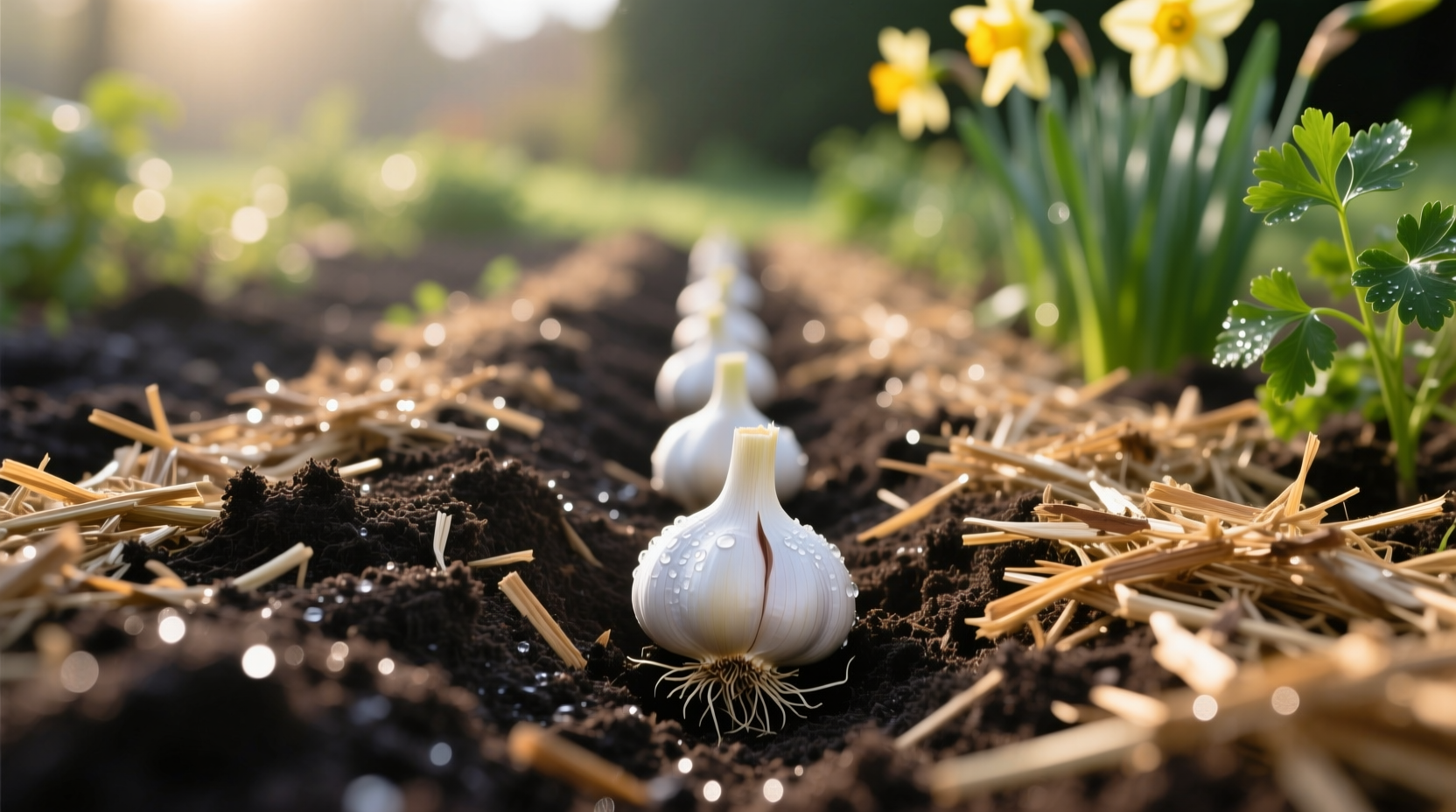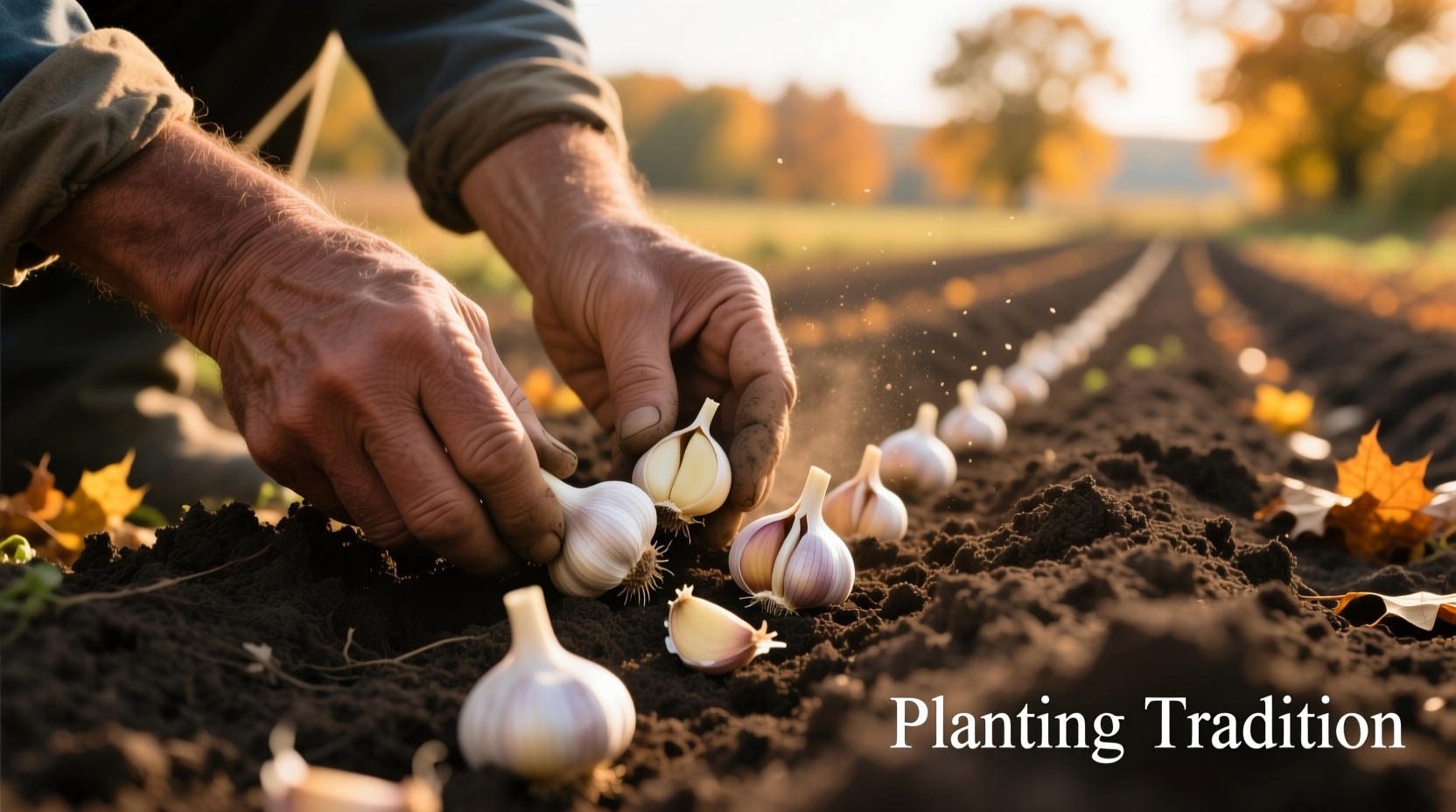Plant garlic cloves 4-6 weeks before your region's first hard frost, typically September to November in most climates. This timing allows roots to develop before winter dormancy, resulting in larger bulbs with better flavor and disease resistance compared to spring-planted garlic.
Discover exactly when and how to plant garlic in fall for maximum yield. This comprehensive guide delivers science-backed timing recommendations, variety selection advice, and step-by-step planting techniques used by professional growers. Whether you're gardening in USDA Zone 3 or Zone 9, you'll learn the precise window for planting garlic in your region and avoid common mistakes that lead to small bulbs or crop failure.
Why Fall Planting Beats Spring for Garlic
Garlic requires vernalization—a cold period—to form proper bulbs. When planted in fall, cloves develop root systems before winter dormancy, then resume vigorous growth in spring. This natural cycle produces bulbs 30-50% larger than spring-planted garlic according to University of Minnesota Extension research. Fall planting also aligns with garlic's natural growth rhythm, reducing disease pressure and improving clove uniformity.

Optimal Planting Timeline by Climate Zone
Timing is critical—plant too early and shoots emerge before winter; too late and roots won't establish. Use this evidence-based schedule verified by USDA Plant Hardiness Zone Map data:
| USDA Zone | First Frost Date | Planting Window | Special Considerations |
|---|---|---|---|
| 3-4 | August-September | August 15-September 15 | Use heavy mulch (6" straw) after ground freezes |
| 5-6 | October | September 15-October 15 | Apply mulch when soil reaches 40°F |
| 7-8 | November-December | October 15-November 15 | Minimal mulch needed; watch for warm spells |
| 9-10 | Rare frost | November-December | Chill cloves in fridge for 40 days before planting |
Selecting Garlic Varieties for Your Region
Not all garlic thrives in every climate. Hardneck varieties tolerate cold better but have shorter storage life, while softnecks suit warmer zones but need less chilling:
- Northern climates (Zones 3-6): Choose hardnecks like 'Music', 'German Extra Hardy', or 'Spanish Roja'—they require 40+ days below 40°F
- Moderate climates (Zones 6-8): Both hardnecks (' Chesnok Red') and softnecks ('Inchelium Red') work well
- Warmer zones (8+): Opt for softnecks ('California Early') or artichoke types ('Susanville')
Avoid supermarket garlic—it's often treated to prevent sprouting and may carry diseases. Instead, source from Seed Savers Exchange or local growers adapted to your region.
Step-by-Step Fall Planting Process
Follow these professional techniques for maximum bulb development:
- Prepare soil 2 weeks pre-planting: Amend with 3" compost and 10-10-10 fertilizer (1 lb per 100 sq ft). Garlic needs pH 6.0-7.5 and excellent drainage.
- Separate cloves carefully: Break bulbs 1-2 days before planting. Keep wrappers intact and select only largest, healthiest cloves.
- Plant at proper depth: Place cloves 2-4" deep (deeper in cold zones), pointed end up, 6" apart in rows 12" apart.
- Water strategically: Irrigate immediately after planting, then only if rainfall is less than 1" per week before freeze-up.
- Mulch at right time: Apply 4-6" straw or leaves after soil temperature drops to 40°F—never before, to avoid rodent nests.
Winter Maintenance Checklist
Garlic needs minimal care during dormancy, but these steps prevent common failures:
- Check mulch depth in January—replenish if less than 3"
- Remove mulch in early spring when temperatures consistently exceed 40°F
- Apply nitrogen fertilizer when shoots reach 4" tall
- Cut scapes on hardneck varieties when curls form to redirect energy to bulbs
Harvest Timing and Curing
Most fall-planted garlic matures in late June to August. Harvest when:
- Lower leaves turn brown (5-6 remaining green leaves)
- Flower stalks (scapes) become stiff
- Bulb wrappers appear papery
Dig carefully with a fork to avoid bruising. Cure in a shaded, well-ventilated area for 3-4 weeks before trimming roots and storing at 55-65°F with 60-70% humidity.
Avoid These 5 Common Mistakes
Based on Oregon State University Extension field trials, these errors cause 70% of garlic failures:
- Planting too early: Results in excessive top growth vulnerable to winter kill
- Using poor soil: Garlic rots in clay without proper amendment
- Overwatering in winter: Causes clove rot in frozen soil
- Planting small cloves: Yields undersized bulbs regardless of care
- Ignoring regional varieties: Softnecks fail in cold zones, hardnecks in warm climates











 浙公网安备
33010002000092号
浙公网安备
33010002000092号 浙B2-20120091-4
浙B2-20120091-4